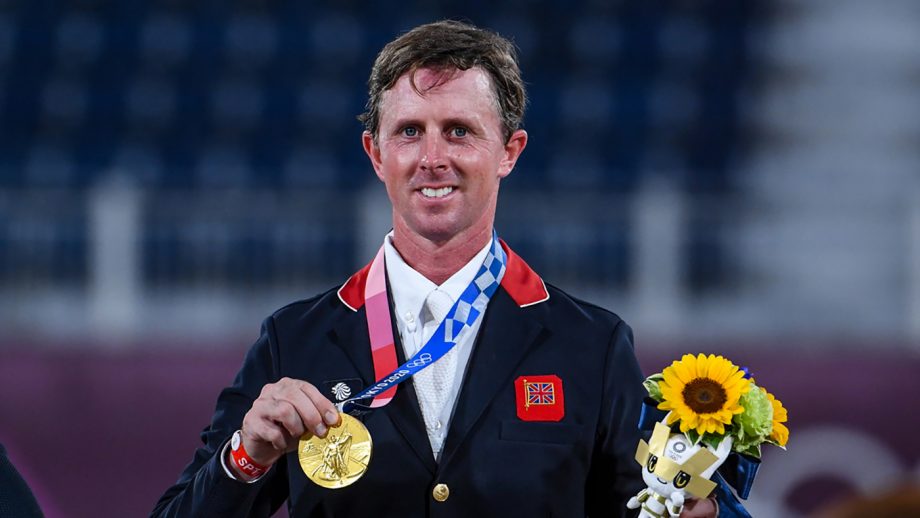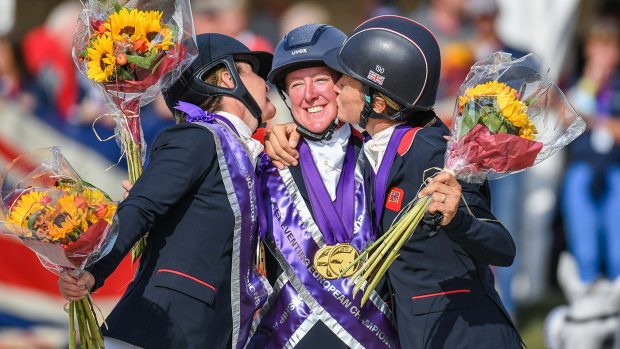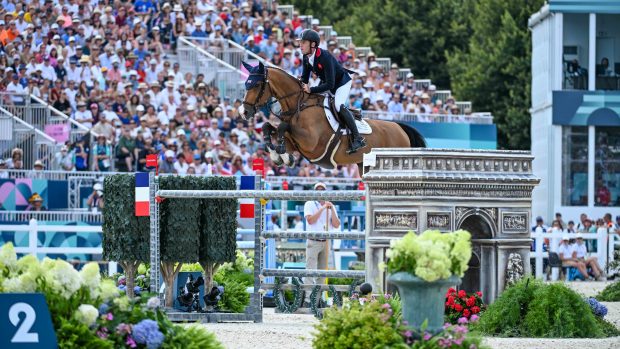“We want to make the Tokyo Olympics vet clinic as welcoming and easy for team vets as possible,” says Chris Elliott, veterinary clinic co-ordinator at the Baji Koen Equestrian Park.
“They have a busy and stressful job so we try to make the clinic as user-friendly as possible. When push comes to shove, we’re all here for the same thing – the horses.”
Irish team vet Marcus Swail confirms: “We have a difficult job here and we wouldn’t be able to manage without the back-up of these guys. There’s a collegiate spirit between the vet clinic vets and the team vets, and to say it’s easy to get back-up is an understatement. No matter what it is, someone here has it in their area of expertise.”
The Tokyo Olympics vet clinic is a state-of-the-art facility funded by the Japan Racing Association (JRA) and staffed largely by volunteer vets, who have come from all over the world at their own expense – some even having to do hotel quarantine on their return home.
There are 50 vets rotating through the clinic, with around 20 on site at any one time, plus there have been 61 registered team vets supporting the Olympic horses across the three disciplines.
For each session of sport, there will be a vet on each warm-up arena and a vet in each corner of the competition arena. On cross-country day, 40 vets were deployed by the clinic, as well as the relevant team vets.
The Equestrian Park was first built in 1940 and there was no vet clinic on site at that time. The clinic was added ahead of the equestrian events for the 1964 Olympics being held at the park.
“Each time the park has been upgraded, the veterinary clinic has been upgraded,” says Chris.
The clinic has a surgical entrance, which is also used by the clinic vets on arrival, and the main entrance with the reception where team vets will come and go, affording them some confidentiality when necessary.
Tokyo Olympics vet clinic: daily monitoring
The weigh scales at the entrance are a busy area – most horses are weighed every day at around the same time, some twice a day.
“It’s an important way for us to monitor them,” says Chris. “Most horses will lose a bit of weight after the flight and then regain it. Weighing horses before and after cross-country gives us a definable number to monitor their recovery and hydration.”
Each horse on site is also entitled to two free blood tests every day, another important monitoring tool.
Beyond the weigh scales are the vet clinic office, the anti-doping tent and the forge.

The weigh scales, anti-doping tent and forge outside the vet clinic at the Tokyo Olympics.
Inside the main entrance are six treatment boxes before the doors through to the hospital and surgical area. Here, there is an office and when we visit, three hours before the team showjumping qualifier starts, the vets are getting ready to head out, their kit bags lined up on a table.
In the window are various mascots, including two Willberrys and a Daruma doll, a traditional Japanese doll which is a symbol of perseverance and good luck. The doll is bought with both eyes blank white and the user selects a goal or wish and paints the right eye. Once the desired goal is achieved – in this case the final Paralympic horse has returned home sound and healthy – the second eye will be filled in.

Mascots in the Tokyo Olympics vet clinic.
There are two stables in the hospital area for examination, plus stocks, and “one of the busiest parts of the clinic” – a room with three ultrasound machines and three X-ray machines, $0.5m of equipment imported from the US.
“If you put this clinic down in Britain, people would be impressed,” says Chris. “It will all stay here afterwards, for the good of the horses here and in this area – one of the many legacies of this Games.”
Outside the Tokyo Olympics vet clinic is one of the three horse ambulances on site – like most trailers used in Britain, horses walk in from the back and exit forwards. Inside there are screens and two padded partitions which can be brought in to support the horse. The ambulances, like those used at London 2012 and Rio 2016, were made by British company Equisave.
Akiko Hirama, from the vet clinic team, says that the surgery at the clinic, including a padded knock down and recovery area, has been added for these Games.
“Previously horses would have had to go to the racehorse training centre, two-and-a-half hours away, for surgery,” she explains.
Chris adds: “It was important to be able to do all procedures here because of the disease-free status of the venue.”

Veterinary clinic co-ordinator Chris Elliot and Akiko Hirama, from the vet clinic team.
Akiko was also the vet in cross-country control on that vital day of the eventing competition. Normally she works at Tokyo’s racecourse, some 20km away, and she worked at the Equestrian Park from 2007 to 2009 as a young vet.
“I used to ride as a student and always liked horses,” she says. “Once the venue was decided to host the Olympics, I was in the area so it all worked out.”
Chris, who is Australian, arrived in Japan on 9 May and did two weeks’ hotel quarantine. On release, his first job was to work through an audit of everything that had been provided and he was impressed.
He also had the opportunity to assist at a CCI2*-L soon after arriving – “it felt like eventing in Australia” – which gave him the opportunity to meet some of the key vet personnel for the Olympics.
Chris explains that veterinary services manager Hiroko Aida has been working on the project for five years.
“She built this cake – we’re just the icing on top,” he says.
He is at pains to add that the JRA have given the vets “everything and above” in terms of facilities and supplies and that their vets have been “integral” to the effort. In addition, the JRA have supported the team well in aspects such as food and cold drinks, which have made the tough working conditions in the heat and with long hours easier.
“They know how to support vets and it’s really appreciated, particularly as most people here are volunteers,” he says.
You might also be interested in:

Who’s responsible for keeping our four-legged athletes in medal-winning shoes? We meet Tokyo 2020’s forge manager…

Find out what time Britain’s showjumpers will start at the Olympics today – start list released for team qualifier

Latest horse and rider changes ahead of Olympic showjumping team qualifier

Ben Maher wins Olympic showjumping individual GOLD at Tokyo Games

Subscribe to Horse & Hound magazine today – and enjoy unlimited website access all year round
Horse & Hound magazine, out every Thursday, is packed with all the latest news and reports, as well as interviews, specials, nostalgia, vet and training advice. Find how you can enjoy the magazine delivered to your door every week, plus options to upgrade your subscription to access our online service that brings you breaking news and reports as well as other benefits.




